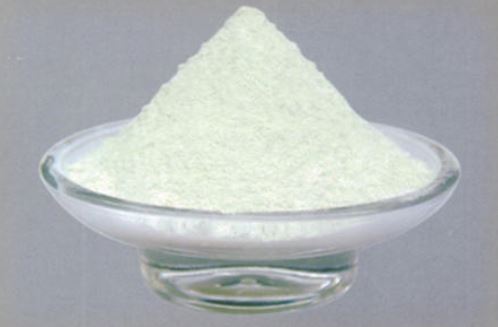Background and overview[1][2]
4-4′-Diaminodiphenyl sulfone is a widely used chemical entity, used both as a hardener in the curing of epoxy resins and as a therapeutic agent for the treatment of bacterial infections in humans or animals. It has been approved as an antibiotic by the Food and Drug Administration since 1963. Regarding its use in human medicine, dapsone was in fact an effective antibiotic used initially in the treatment of leprosy and later as an inhibitor of dermatitis herpetiformis. Dapsone has recently been used as an effective antibiotic to prevent Pneumocystis carinii pneumonia (PCP), an opportunistic disease in HIV infection that is usually diagnosed when the disease is severe and often occurs in women, seemingly in women. First or second AIDS-related disease. There has therefore been a resurgence and increase in therapeutic interest in this antimicrobial agent.

4,4′-diaminodiphenyl sulfone
Apply[3]
4,4′-diaminodiphenyl sulfone is an important aromatic sulfone compound refined through ammonia reaction under high temperature and high pressure. It is mainly used in the synthesis of polysulfone amide resin and other polymer synthetic materials. Kinds of acidic azo dyes and disperse dyes. It can be used as epoxy resin curing agent and insulating materials in the electrical industry, textile equipment, and as a catalyst. It can also be used in the pharmaceutical industry to treat leprosy, dermatitis herpetiformis, and AIDS.
Preparation[2]
At present, 4,4′-diaminodiphenyl sulfone is mainly obtained by using 4,4′-dichlorodiphenyl sulfone and ammonia water as raw materials through ammonolysis reaction.
Aminolysis reaction refers to the process in which organic compounds containing various functional groups generate amine compounds under the action of amination agents. Aminolysis reactions include the ammonolysis of halogens, the ammonolysis of carbonyl compounds, and the ammonolysis of hydroxyl compounds. , Ammonolysis and direct ammonolysis of sulfo and nitro groups. The preparation of 4,4′-diaminodiphenyl sulfone from 4,4′-dichlorodiphenyl sulfone through ammonolysis reaction belongs to the ammonolysis reaction of halogen.
The description of the first synthesis of 4,4′-diaminodiphenyl sulfone was reported in FR829926 in 1938. The product was obtained when heating 4,4′-dichlorodiphenyl sulfone and 25% ammonia water.
Page 310 of the “Chemical Product Handbook·Rubber and Plastic Additives” edited by Zhang Lindong discloses a method for preparing 4,4′-diaminodiphenyl sulfone by ammonolysis: converting 4,4′-dichlorodiphenyl sulfone , copper powder, cuprous chloride and ammonia water were added to the autoclave, heated with stirring, reacted at 170-202°C and a pressure of 3MPa for 14 hours, then cooled to 60°C, filtered, the filter cake was dissolved in 10% hydrochloric acid, and added Decolorize the activated carbon, filter, cool to below 10°C, adjust the pH value to 2 to 2.5 with sodium carbonate solution, centrifuge and filter, then wash with water until neutral, and dry to obtain the finished product, with a yield of 78%.
This kind of ammonolysis reaction is generally carried out in a high-pressure reaction kettle. The kettle-type ammonialysis process is relatively mature, but there are shortcomings: first, the intermittent reaction requires long operation time and small output; second, the kettle-type ammonia hydrolysis process is relatively mature. The decomposition reaction time is long, high temperature and high pressure, and the by-product ammonium chloride is extremely corrosive to the equipment, posing safety hazards; third, the investment is large, and the autoclave is made of special steel, which is difficult to manufacture.
Specific method:
Put molten 4,4′-dichlorodiphenylsulfone into the pipeline reactor through a high-pressure pump at a flow rate of 140 g/hour, and at the same time, a mixture of 25% ammonia water and cuprous chloride with a mass fraction of 800 g / hour flow rate (the flow rate of cuprous chloride is 5.6 grams/hour) is also driven into the pipeline reactor through a high-pressure pump, and a continuous ammonolysis reaction is carried out at a pressure of 14Mpa and a temperature of 220°C. The reaction material stays in the high-pressure pipeline The time is 20 minutes; after the product is discharged under reduced pressure through the pressure reducing valve, the product is analyzed by liquid chromatography. The ammonolysis product contains 0.1% of 4,4′-dichlorodiphenylsulfone. The discharged material is sent to the recovery device to distill out excess ammonia. , separate the crude product of 4,4′-diaminodiphenyl sulfone; dissolve the crude product in 10% mass fraction of hydrochloric acid at 30°C, add activated carbon to decolorize, filter, cool to below 10°C, and use 10% mass fraction of sodium carbonate solution Adjust the pH value to 2 to 2.5, centrifuge and filter, then wash with water until neutral, and dry to obtain the finished product. The finished product of 4,4′-diaminodiphenyl sulfone with a purity of 99.5% (liquid chromatography analysis), total yield It is 97.1% (based on 4,4′-dichlorodiphenylsulfone).
Main reference materials
[1] Zhao Pei, Zhu Rongqi, & Gu Yi. (2010). Study on the glass transition temperature of benzoxazine/epoxy resin/4,4′-diaminodiphenyl sulfone ternary blend system. Journal of Polymers(01), 67-75.
[2] Zhao Pei, Zhu Rongqi, & Gu Yi. (2010). Study on the glass transition temperature of benzoxazine/epoxy resin/4,4′-diaminodiphenyl sulfone ternary blend system. Journal of Polymers (1), 65-73.
[3] Yang Xinzhou, Yang Zixian, Hao Zhiyun, & Lin Huikun. (2013). Separation of palladium by solid phase extraction of 4,4′-diaminodiphenyl sulfone. Metallurgical Analysis, 33(12), 39-42.

 微信扫一扫打赏
微信扫一扫打赏

